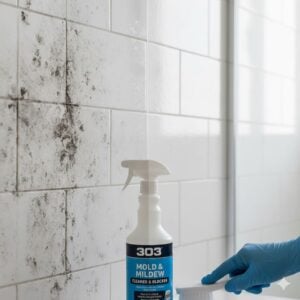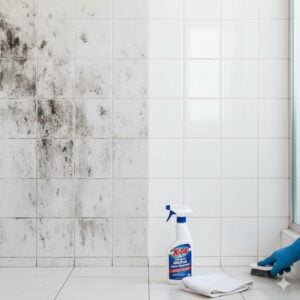When people think about Dubai, they often imagine skyscrapers, luxury, and year-round sunshine. But behind that image lies a growing concern that affects everyone living in the city — air quality in dubai. Despite modern infrastructure and advanced technology, Dubai struggles with recurring episodes of poor air quality, especially during certain months of the year. Residents often notice hazy skies, an itchy throat, or a faint burning smell in the air, and many wonder what causes it. Understanding what makes air quality in dubai bad today is important not only for health but also for long-term sustainability and urban planning. In this article, we’ll explore the main causes behind bad air quality in Dubai, its effects on daily life, and what both individuals and authorities can do to improve it.
Table of Contents
ToggleWhy Air Quality in Dubai Matters
Air quality in dubai directly impacts the wellbeing of millions of residents and visitors. Poor air quality doesn’t just cause short-term irritation; it has long-term consequences for the lungs, heart, and immune system. Children, the elderly, and people with respiratory conditions like asthma are especially vulnerable. With Dubai’s rapid growth, constant construction, and increasing traffic, the city faces unique challenges that make maintaining clean air an ongoing struggle. Monitoring and managing air quality has become a priority for both local authorities and environmental experts, but the combination of natural and human-made factors keeps the problem complex.
What Makes Air Quality in Dubai Bad Today
Several factors contribute to why air quality in dubai is often poor. These include pollution from vehicles, industrial emissions, dust storms, and high humidity that traps pollutants in the air. Let’s break these down to understand how each plays a role in the air you breathe.
1. Vehicle Emissions
Dubai has one of the highest rates of vehicle ownership in the world, and most residents rely heavily on cars for daily travel. While modern vehicles produce fewer emissions than older models, the sheer number of cars on the road creates a continuous stream of exhaust gases. These include nitrogen oxides (NOx), carbon monoxide (CO), and fine particulate matter (PM2.5). The latter is particularly harmful because it’s small enough to enter the bloodstream through the lungs. Traffic congestion during peak hours causes localized pollution “hot spots,” especially along Sheikh Zayed Road, Al Khail Road, and major business districts.
2. Construction Dust
Dubai’s skyline is constantly evolving, with cranes, excavators, and cement mixers operating year-round. Construction activities release large amounts of dust and particulate matter into the air. Even though construction sites are often covered or sprayed with water to reduce dust, the dry desert climate makes it difficult to contain. Fine dust particles remain suspended in the air for hours, contributing to the hazy look many residents notice during their commute. In areas with multiple projects, like Business Bay and Dubai Creek Harbour, air quality can fluctuate daily depending on wind conditions.
3. Industrial Pollution
Factories, desalination plants, and power stations located on the outskirts of Dubai contribute to air pollution through emissions of sulfur dioxide (SO₂), nitrogen dioxide (NO₂), and volatile organic compounds (VOCs). While industries are regulated, the cumulative effect of continuous operations adds to the city’s pollution load. During still weather conditions, these pollutants accumulate near the ground, worsening air quality in nearby residential zones. In some cases, this leads to visible smog or a faint burning odor, particularly noticeable in the morning or late evening.
4. Dust Storms and Natural Factors
Dubai’s geography makes it especially prone to dust storms, known locally as “shamal” winds. These winds blow from the northwest, carrying fine sand and dust particles from the desert. During a shamal event, air quality in dubai can drop sharply within hours, even if industrial and vehicle emissions remain stable. The problem intensifies during dry months when there is little rainfall to settle the dust. These natural factors make it challenging to maintain consistently clean air, especially during summer when wind and temperature patterns trap pollutants closer to the ground.
5. Climate and Weather Patterns
Dubai’s weather plays a big role in air quality fluctuations. The combination of high temperatures, strong sunlight, and stagnant air can cause a phenomenon called “thermal inversion.” Normally, warm air rises and carries pollutants upward, but during an inversion, a layer of warm air traps cooler air below it, preventing pollutants from escaping. This leads to a visible haze or smog that can last for days. Humidity also amplifies the issue, making the air feel heavier and more suffocating when pollution levels are high.
6. Marine and Port Emissions
Another often overlooked source of pollution is Dubai’s busy ports. Cargo ships and cruise liners emit large amounts of sulfur and nitrogen oxides when docked, especially if they keep engines running to maintain onboard systems. These emissions mix with vehicle and industrial pollution, contributing to poor air quality in coastal areas like Jebel Ali and Port Rashid. Although regulations are tightening, marine traffic still adds a measurable share to the city’s pollution levels.
Health Effects of Poor Air Quality
The impact of poor air quality in dubai is more than just discomfort. Short-term exposure can cause coughing, throat irritation, headaches, and eye discomfort. Long-term exposure is linked to more serious issues such as chronic bronchitis, cardiovascular diseases, and decreased lung function. Studies suggest that residents in high-pollution areas may experience fatigue and reduced productivity. For sensitive groups — especially children — the risks are higher. Breathing polluted air regularly can affect growth and immune response, leading to recurring respiratory infections.
How Residents Can Protect Themselves
While individuals can’t control outdoor pollution sources, they can take simple precautions to minimize exposure. Staying indoors during dust storms, keeping windows closed when air quality is poor, and using air purifiers at home can make a big difference. Plants like peace lilies, snake plants, and spider plants also help filter indoor air naturally. Checking air quality indexes (AQI) through local apps or weather reports allows residents to plan outdoor activities safely. Wearing a high-quality mask (N95 or equivalent) can reduce inhalation of fine dust on days with visible haze.
Government Efforts to Improve Air Quality in Dubai
Dubai’s authorities have taken multiple steps to monitor and improve air quality. The Dubai Municipality operates several air monitoring stations across the city that measure pollutants in real time. The government has also introduced environmental regulations to reduce industrial emissions and promote green transportation. Electric vehicle charging stations are expanding, and initiatives such as Dubai’s Clean Energy Strategy 2050 aim to reduce carbon emissions by promoting renewable energy. Moreover, stricter building regulations now require dust control measures at construction sites. While these efforts are ongoing, the city’s rapid growth continues to test the effectiveness of these policies.
What Bio-On Cleaning Services Observes
As a company deeply involved in cleaning and environmental hygiene, we’ve noticed that the demand for deep cleaning and air purification rises during poor air quality periods. Dust and pollutants don’t just stay outside; they settle on furniture, AC vents, and surfaces indoors. This can worsen symptoms for those already sensitive to air quality issues. Our team has helped many residents and businesses in Dubai improve their indoor environments through advanced cleaning and air purification solutions. While our main focus is cleaning services, our observations align with environmental reports — poor air quality days lead to noticeable dust accumulation indoors, proving how connected outdoor and indoor air truly are.
Long-Term Prevention and Sustainable Actions
Improving air quality in dubai requires a combined effort from both residents and policymakers. Transitioning to electric vehicles, improving waste management, and enforcing stricter emission standards for industries are vital long-term measures. On a personal level, individuals can contribute by using public transport more often, maintaining AC systems to ensure clean airflow, and reducing energy consumption to lower pollution indirectly. Small habits, when practiced collectively, make a significant impact.
Conclusion
Air quality in dubai fluctuates daily due to a mix of natural and human-made factors — from traffic and construction dust to desert winds and weather patterns. While it’s difficult to completely eliminate pollution, awareness and proactive action go a long way. The government continues to invest in clean energy and environmental monitoring, but every resident can also play a role by adopting cleaner habits and maintaining healthier indoor spaces. If you’re concerned about how air pollution affects your home environment, Bio-On Cleaning Services can help improve air quality through deep cleaning and duct sanitization. Click the contact button on the right middle of this article to speak with our experts and breathe cleaner, safer air in your home or office today.













